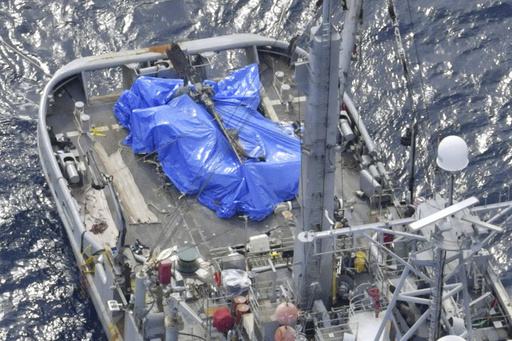A recent investigation has revealed that a gear crack in a V-22 Osprey that resulted in a deadly crash last year may have been initiated by weak spots in the metal used to manufacture that particular part. The crash claimed the lives of eight Air Force Special Operations Command service members in November. This incident marked the second time in less than two years that a catastrophic failure of a component in the Osprey’s proprotor gearbox had led to a fatal accident. In June of 2022, five Marines lost their lives due to a different part of the proprotor gearbox system failing.
These crashes prompted an urgent effort by the V-22 program office and Bell Flight, the manufacturer, to identify solutions for the critical system. Various components within the proprotor gearbox have experienced premature wear, raising concerns about the system’s reliability. Although an exact cause for the crashes is still undetermined, the discovery of potential weak spots in the metal might provide some insight into the issue.
The V-22 Osprey, a unique aircraft capable of transitioning between airplane and helicopter modes, has played a crucial role in special operations and combat missions, accumulating hundreds of thousands of flight hours successfully. Despite its operational achievements, the aircraft has a troubled history of crashes, particularly concerning the proprotor gearbox.
Recent data obtained through the Freedom of Information Act indicates that over the past decade, 609 proprotor gearboxes have been removed for repairs. Moreover, within the last five years, the Marine Corps, Navy, and Air Force have collectively reported 60 incidents involving the proprotor gearbox. The Air Force’s investigation identified a crack in a pinion gear, a component of the proprotor gearbox, as one of the factors contributing to the fatal crash off the coast of Japan.
The pinion gears, crucial components located inside the proprotor gearboxes, play a vital role in transmitting power from the engines to rotate the Osprey’s masts and rotor blades. The swift rotation and extreme pressure these gears undergo can lead to overheating and the generation of metal flakes that can cause damage to the transmission, potentially resulting in the loss of the aircraft and its crew.
In the aftermath of the crash investigation, it was discovered that the alloy used in manufacturing the pinion gears, known as X-53 VIMVAR, contained multiple inclusions that could weaken the material and cause fatigue cracking. While the conclusive link between these inclusions and the cracking could not be established, the investigation highlighted the potential risks associated with the presence of such defects in critical components.
The restrictions on Osprey flights are expected to remain in place at least until mid-2025, requiring the aircraft to operate within a limited radius for safety purposes. Air Force Special Operations Command and other branches have taken measures to address the gearbox issues and enhance the safety of Osprey operations. Ongoing efforts include evaluating improved materials and production methods to mitigate the risks associated with the proprotor gearbox.


